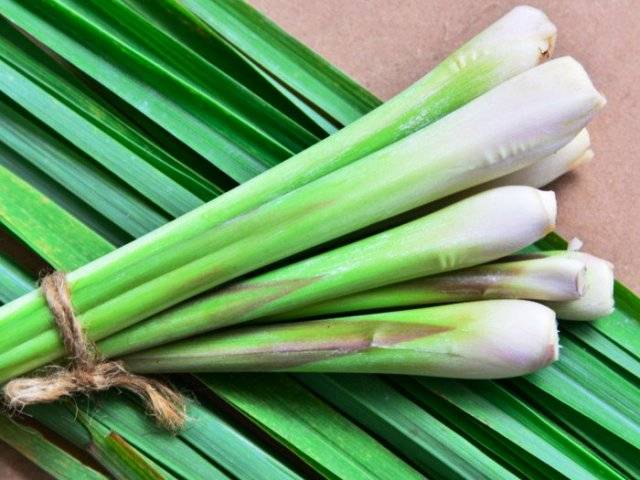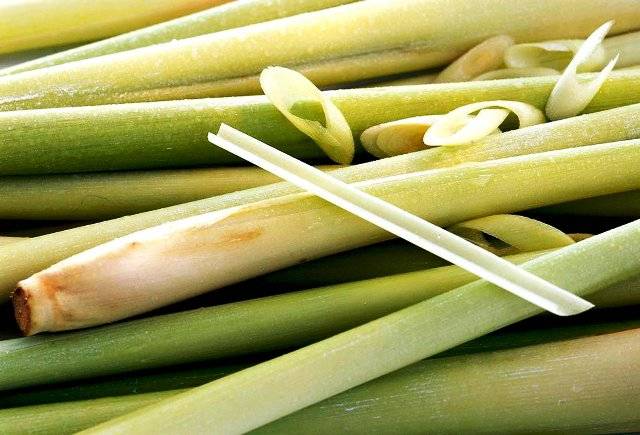
Lemongrass is a tropical plant with thin and long leaves growing upto 3-8 feet tall with a tangy lemony scent and flavor. This plant is native to South and South East Asia and is widely used in Indian, Thai, Vietnamese cooking and medicine. It is widely grown in Kerala, Tamil Nadu, Karnataka, parts of UP, Assam in the North Eastern region and Uttaranchal in the Northern region.
Lemongrass provides us with essential vitamins like vitamin A, vitamin B1 (thiamine), vitamin B2 (riboflavin), vitamin B3 (niacin), vitamin B5 (pantothenic acid), vitamin B6 (pyridoxine), vitamin C and folate, essential minerals like calcium, potassium, phosphorous, magnesium, copper, iron and zinc.
Other Famous Names of Lemongrass in India
Nimma Gaddi (Telugu), Elumichai-Ennai Pullu (Tamil), Nimbe Hullu (Kannada), Cochin Grass or Malabar Grassor or Vasana Pullu (Malayalam), Gavati Chaha (Marathi), Gandhatrina (Hindi), Lilicha (Gujarati).
Climate Required for Lemongrass farming
Lemongrass can be grown in a place where there is a warm and humid climate with full of sunshine and less rainfall ranging from 200-250 cm well distributed throughout the year.
Soil Required
The best-suited soil for the cultivation of lemongrass farming is sandy loam soil and red soils with a good drainage and a good organic matter. Whereas, waterlogged soils should not be used for its cultivation.

Sowing Time
The best time for preparing nursery beds of lemongrass is in the month of March- April. Though spacing of lemongrass depends upon the growth habit i.e 60 cm x 60 cm. Spacing from seedlings and 90 cm x 60 cm spacing for slips is required. Sowing depth should be 2-3 cm. Two-month-old seedlings are ready for transplantation in the main field.
Seed Requirement
Use seed rate of 1.6-2 kg/acre. Before sowing do chemical treatment of seed with Ceresan @0.2 percent or Emisan@1 gm/kg of seeds.
Health Benefits of Lemon Grass
-
Urinary Tract Soother- Lemongrass is widely used as it has urinary tract healing capacities.
-
Rich in antioxidants, flavonoids , and anti-fungal and antimicrobial compounds.
-
Aids Digestion, Stomach Disorders- Lemongrass tea aides stomach infections, prevents ulcers, stimulates digestion. It also treats nausea, stomach aches and constipation.
-
Helps in Weight Loss- Drinking a cup of lemongrass tea prior to each meal improves metabolism and regulates digestion. It also helps in breakdown and oxidation of fatty acids.
-
Benefits Skin and Hair- It brightens skin and gives you a fairer complexion. As it is antibacterial it promotes healthy hair growth.
-
Aids Cold and Flu- It brings down fever, fights infections and provides relief in aches and pains.
-
It has Anti-Cancer Properties, lowers cholesterol, aides asthma, type-2 diabetes, rheumatism etc.
-
Provides a Sound Sleep- Lemon grass calms the muscles and the mind for better and deeper sleep. It reduces stress levels and fight against disorders like Parkinson’s and Alzheimer’s.
-
Mosquito Repellant Properties- Mosquitoes hate the fragrant aroma of lemongrass. Therefore, consuming lemongrass keeps you protected from mosquitoes.
-
Aids Menstrual Problems- Lemongrass helps to deal menstrual problems as well.
Commercial Varieties
OD-19 (Sugandhi), Pragathi, Nima, Kaveri, Krishna, NLG 84, OD 410.
Cultivation Cost
The cultivation cost of lemongrass is incurred in two stages-
1. Planting Cost- It is nonrecurring, average of which comes to Rs. 70381.
2. Maintenance cost and harvest stage cost- Maintenance cost and harvest stage cost are recurring which comes to Rs. 208581- per hectare. Thus the total cost of cultivation for lemongrass comes to Rs. 278961- per hectare.
















